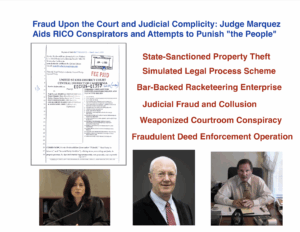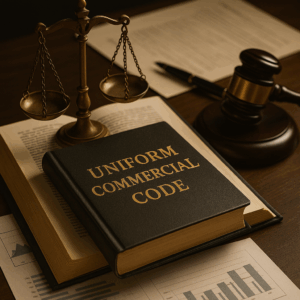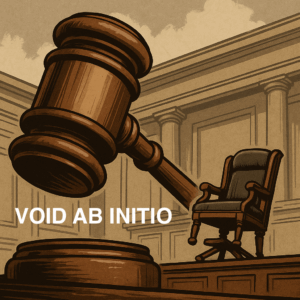This guide explains how credit processing mechanisms like IRS Form 1041, Form 1042, and UCC filings allow for lawful deduction, refund claims, and debt discharge. You’ll learn how to use bad debt deductions under IRC §453, how to treat 1099-OID and 1099-B income, and how structured deposits to banks may qualify as lawful credit tenders. Designed for trusts, estates, and foreign or ecclesiastical entities, this strategy aligns contract law, tax law, and commercial paper. Explore how to convert paper obligations into lawful credits and reclaim financial standing.
In the realm of taxation, commerce, and sovereign finance, there exists a powerful suite of tools known as credit processing mechanisms. These are more than just forms—they are instruments used to lawfully claim credits, process deductions, discharge debt, and recover value within the framework of contract law, U.S. tax law, and commercial paper.
Whether operating a foreign trust, private estate, sovereign nation, or an ecclesiastical or tribal entity, these mechanisms are essential to navigating both the public legal system and the private credit matrix.
Let’s explore them in full.
💡 What Is a Credit Processing Mechanism?
A credit processing mechanism is any lawful structure, instrument, or system used to:
-
Recognize constructive income
-
Process deductions and losses
-
Claim credits, refunds, or offsets
-
Reduce or eliminate taxable obligations
These can be structured through IRS forms, commercial liens, trust documents, contracts, and even lawful banking deposits when treated properly under Title 12, Title 26, and UCC provisions.
🧾 Primary Credit Processing Mechanisms
1. Form 1041 – U.S. Income Tax Return for Estates and Trusts
-
Used to receive income (e.g. 1099-C), process deductions (e.g. bad debts), and claim refunds or offsets.
-
Ideal for private sovereign trusts or foreign estate entities.
-
Can treat discharged debts as income and offset with IRC §166 (bad debt) or §453 (installment sale) deductions.
2. Form 1040 with Form 982 – Reduction of Tax Attributes
-
Used by individuals to exclude cancelled debt income (e.g. from 1099-C) when insolvent or after bankruptcy.
-
Powerful for recharacterizing debt as non-taxable, particularly under insolvency rules.
-
Form 982 is also usable for public-to-private discharge of liabilities.
3. Form 1042 – Annual Withholding Tax Return for U.S. Source Income of Foreign Persons
-
Crucial when dealing with foreign trusts, nonresident aliens, or foreign sovereigns.
-
Allows reporting and proper accounting of U.S.-sourced payments withheld or exempt.
-
Also useful for foreign entities claiming treaty benefits or tax exemptions on deposited income.
4. Form 1099-C – Cancellation of Debt
-
Income for the recipient unless properly offset.
-
Triggers credits and deductions when processed through Form 1041 or excluded via Form 982.
5. Form 1099-A – Acquisition or Abandonment of Secured Property
-
Often accompanies a 1099-C.
-
Indicates that property has been abandoned or repossessed—establishes constructive transfer.
-
May trigger a basis adjustment, loss, or deduction.
6. Form 1099-B – Proceeds from Broker and Barter Exchange Transactions
-
Used to report gains or losses from securities, commodities, or digital assets.
-
May show constructive proceeds even when no actual gain is received.
-
Can be used by trusts or sovereign entities to process offsets against public claims.
7. Form 1099-OID – Original Issue Discount
-
Used to report the discounted amount of a debt instrument or bond that accrues over time.
-
Often treated as phantom income, but also creates a corresponding credit entry.
-
Can be extremely powerful when used to discharge debt via bond instruments or Treasury Direct-based claims.
8. Form 1120 / 1120-F – Corporate or Foreign Corporate Return
-
Used by private corporations or foreign entities (including trusts acting as sovereign nations).
-
Reports cancellations, capital adjustments, deductions, and tax positions.
-
Ideal when operating as a foreign private administrative body.
9. Form 941 / 944 – Employment Tax Returns
-
Used to report wage withholdings and employment taxes.
-
Often leveraged for overpayment recovery, improper collections, or W-2 adjustments.
-
Commonly paired with Form 843 to claim refunds or correct employer-side remittances.
10. Form 843 – Claim for Refund and Request for Abatement
-
A universal tool to:
-
Claim refunds
-
Request abatement of penalties
-
Correct erroneous assessments
-
-
Used with Forms 1041, 941, 1099, and trust entities to recover value.
11. UCC Financing Statement (UCC-1)
-
Used to perfect a lien on the public legal person (the ALL CAPS NAME).
-
Establishes a secured interest in commercial transactions and legal standing in equity.
-
Lays the foundation for credit-based discharge, set-off, and acceptance-for-value processes.
12. Form 2439 – Notice to Trust of Undistributed Long-Term Capital Gains
-
Filed by regulated investment companies when gains aren’t distributed.
-
Trusts and estates can use this to claim credits or refunds on withheld capital gain tax.
💵 Deposits as Lawful Credit Processing Events
Under Title 12 U.S.C. § 411, and reinforced by commercial principles (UCC), a deposit made into a bank may be considered a credit transaction, not a bailment.
What This Means:
-
When you deposit a negotiable instrument or lawful credit, the bank issues a corresponding credit entry on their books.
-
You become a creditor, and the bank a debtor to your trust or entity.
-
In commercial law, this is a tender of credit, which can be offset, monetized, or claimed as settlement for public obligations—especially when recorded properly.
⚠️ Important: This depends on how the deposit is structured (e.g., bonded promissory note, bill of exchange, lawful money demand, etc.) and your standing as a secured party or fiduciary.
🔒 Private or Non-Typical Credit Mechanisms
| Mechanism | Function |
|---|---|
| Foreign Grantor Trusts | Offset gains, claim credits, reduce taxable income internationally |
| Ecclesiastical Trusts | Use Canon or Divine Law to process religious, sovereign, or charitable credits |
| Cestui Que Vie Trust Claims | Secure rights or claims over bonded public trust estates (e.g., ALL CAPS NAME) |
| Treasury Direct / Redemption Accounts | Advanced discharge/settlement through public bond and birthright claim theory |
| Bond for Discharge of Debt | Discharges obligations under UCC 3-104 using bonded promissory notes |
| FBO (For Benefit Of) Trust Accounts | Used in equity law to receive settlements, credits, and estate proceeds |
🧠 Summary
A credit processing mechanism can be:
-
A tax form (e.g., 1041, 1042, 843, 982)
-
A legal entity (e.g., trust, foreign nation, ecclesiastical body)
-
A commercial tool (e.g., UCC-1, bond, deposit instrument)
-
A claim platform (e.g., redemption account, estate trust)
Each of these tools enables lawful recognition, reduction, or settlement of public and private obligations—and opens the door to credits, refunds, and asset recovery.




